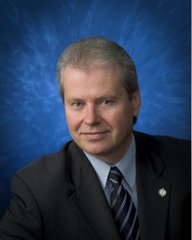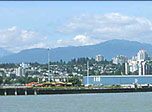On May 27, King Charles will fulfill his royal duties in opening Parliament by reading “The Speech from the Throne” in the Canadian Senate chamber.
Canada's
history is deeply intertwined with the reigns of an uninterrupted succession of
French and British monarchs since 1534, when the King of France claimed
possession of what is now Canada. Their influence has significantly shaped our
country's democratic development, marking a rich and profound historical
significance of the monarchy in Canada.
Queen
Elizabeth II was the first of Canada's sovereigns to be proclaimed separately
as Queen of Canada in 1953, when a Canadian law, the Royal Style and Titles
Act, formally conferred the title of "Queen of Canada". The
proclamation reaffirmed the monarch's existing role in Canada as independent of
the monarch’s role in the United Kingdom and other Commonwealth realms. Consequently,
King Charles is the distinct King of Canada.
As
a constitutional monarch for Canada, His Majesty King Charles III doesn't “rule”
the country in a political operational sense. However, as Canada's Head of
State, he “reigns” and is fundamental to Canada's system of government and our
sense of identity. The Crown has prerogative powers in reserve, both written
and unwritten, to protect the realm.
As
the personal embodiment of the Crown, His Majesty's role is not just
ceremonial. His role is to unite Canadians, regardless of their political
affiliations, and give a collective sense of belonging to our country. The
King's picture is displayed in courtrooms, city council chambers, and
legislatures, symbolizing a unity that transcends political divisions.
The
Americans had a revolution to gain independence from Britain. The Canada's
remained separate colonies until 1867, and continued and evolved as a
constitutional monarchy with a British-style parliamentary system.
In
his declaration to the Accession Council on September 10, 2022, His Majesty
King Charles III stated:
I am deeply aware of this great inheritance and of the
duties and heavy responsibilities of sovereignty which have now passed to me.
In taking up these responsibilities, I shall strive to follow the inspiring
example I have been set in upholding constitutional government and to seek the
peace, harmony and prosperity of the peoples of the Commonwealth Realms and
Territories throughout the world.
At
the Coronation, King Charles prayed:
God of compassion and mercy whose Son was sent not to be
served but to serve, give grace that I may find in thy service perfect freedom
and in that freedom knowledge of thy truth. Grant that I may be a blessing to
all thy children, of every faith and conviction, that together we may discover
the ways of gentleness and be led into the paths of peace through Jesus Christ
our Lord. Amen
New
Canadians swear allegiance to The King, as well as Members of Parliament and
the Legislatures, military, and police officers.
We
do not swear allegiance to a document (a constitution), political entity, or
flag. Instead, we swear allegiance to a person who embodies all these as well
as our collective values.
The
Speech from the Throne opens every new session of Parliament. The Speech
introduces the government’s general administrative direction and policy goals.
The Senate and the House of Commons cannot conduct public business until
Canada’s Head of State or their representative reads the Speech.
Traditionally,
the Governor General reads the Speech as The Crown’s representative in Canada.
In 1957 and 1977, The Queen was in Canada and was invited to read the Speech
herself. It is called the Speech from the Throne because usually, the
Governor-General reads the Speech from the seat—or the Throne—in the Senate
Chamber reserved for The Sovereign or their representative in Canada. It is the
general policy declaration to be administered in the King’s name by the King’s
government.
Members
of the House of Commons, senators, Justices of the Supreme Court of Canada, and
other guests attend the reading of the Speech in the Senate chamber, which will
be televised.
On
the advice of the Prime Minister, the Governor General issues a proclamation to
summon Parliament. This proclamation formally announces that Parliament is to
convene for a new session. The Senate and the House of Commons do not have the
authority to open a session of Parliament until the Governor General issues
this proclamation.
The
government writes the Throne Speech. The reader can add an introduction to the
Speech that briefly outlines their own recognitions and encouragements.
After
the Throne Speech, the new Parliament session is officially open. Public
business in both the Senate and the House of Commons can begin.
After
the Throne Speech, the first order of business is for the Prime Minister to
introduce Bill C-1 in the House of Commons. A senator also introduces a similar
bill, Bill S-1, in the Senate. These bills claim the House of Commons' and
Senate's independence from the Crown and their right to meet and debate. This
process marks the beginning of the legislative session and sets the tone for
the parliamentary debates and discussions that will follow.
These
bills are given first reading, but not second reading. After the first reading,
the House of Commons and the Senate debate the Speech from the Throne. After
two days of proceedings and debate, a vote is called about “confidence” in the
Throne Speech. The government must win the vote to stay in power. If the government
loses the vote on the Throne Speech, the Prime Minister must ask the Governor
General for dissolution of Parliament, which causes an election.
Canada
was formerly several dependent Crown colonies of the United Kingdom. There was
a long path from Colony to responsible government and full independence. In
1867, Canada wrote its Constitution entitled the British North America Act and
had it passed by the Westminster Parliament in London to become the first independent
country to become a member of an emerging British Commonwealth of Nations.
Subsequent
statutes were passed to enhance full independence. In 1982, the Canadian Constitution
was patriated and made wholly Canadian by adopting a Canadian amending formula
while attaching a new Charter of Rights and Freedoms, which applies to all
Canadians.
First
Nations peoples have some parallel independent historical relations with the British
Crown from King George III's Royal Proclamation of 1763. The Royal Proclamation
set the constitutional structure for negotiating treaties with the Indigenous
inhabitants. It is referenced in section 25 of the Constitution Act, 1982.
Starting
with the 1763 Treaty of Paris, New France, of which the colony of Canada was a
part, formally became a part of the British Empire. The Royal Proclamation of
1763 enlarged the colony of Canada under the Province of Quebec, and with the
Constitutional Act of 1791, became known as the Canadas.
The
Monarchs of Canada are recognized as:
George
III George William Frederick 1760 –
1820
George
IV George Augustus Frederick 1820 —
1830
William
IV William Henry 1830 — 1837
Victoria Alexandrina Victoria 1837 — 1901
Edward
VII Albert Edward 1901— 1910
George
V George Frederick Ernest Albert 1910 —
1936
Edward
VIII Edward Albert Christian George 1936 — 1936 (abdicated)
George
VI Albert Frederick Arthur George 1936 —
1952
Elizabeth
II Elizabeth Alexandra Mary 1952 — 2022
Charles
III Charles Philip Arthur George 2022 — present










No comments:
Post a Comment